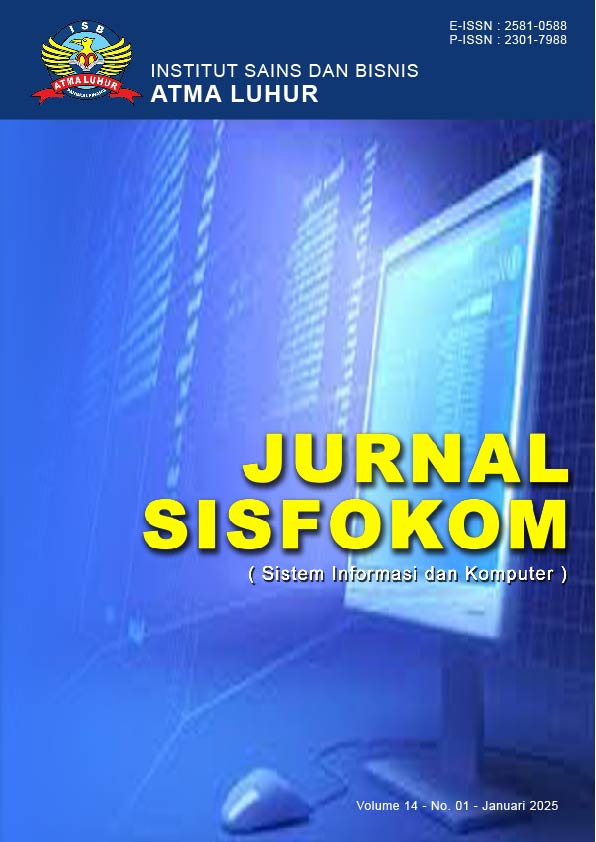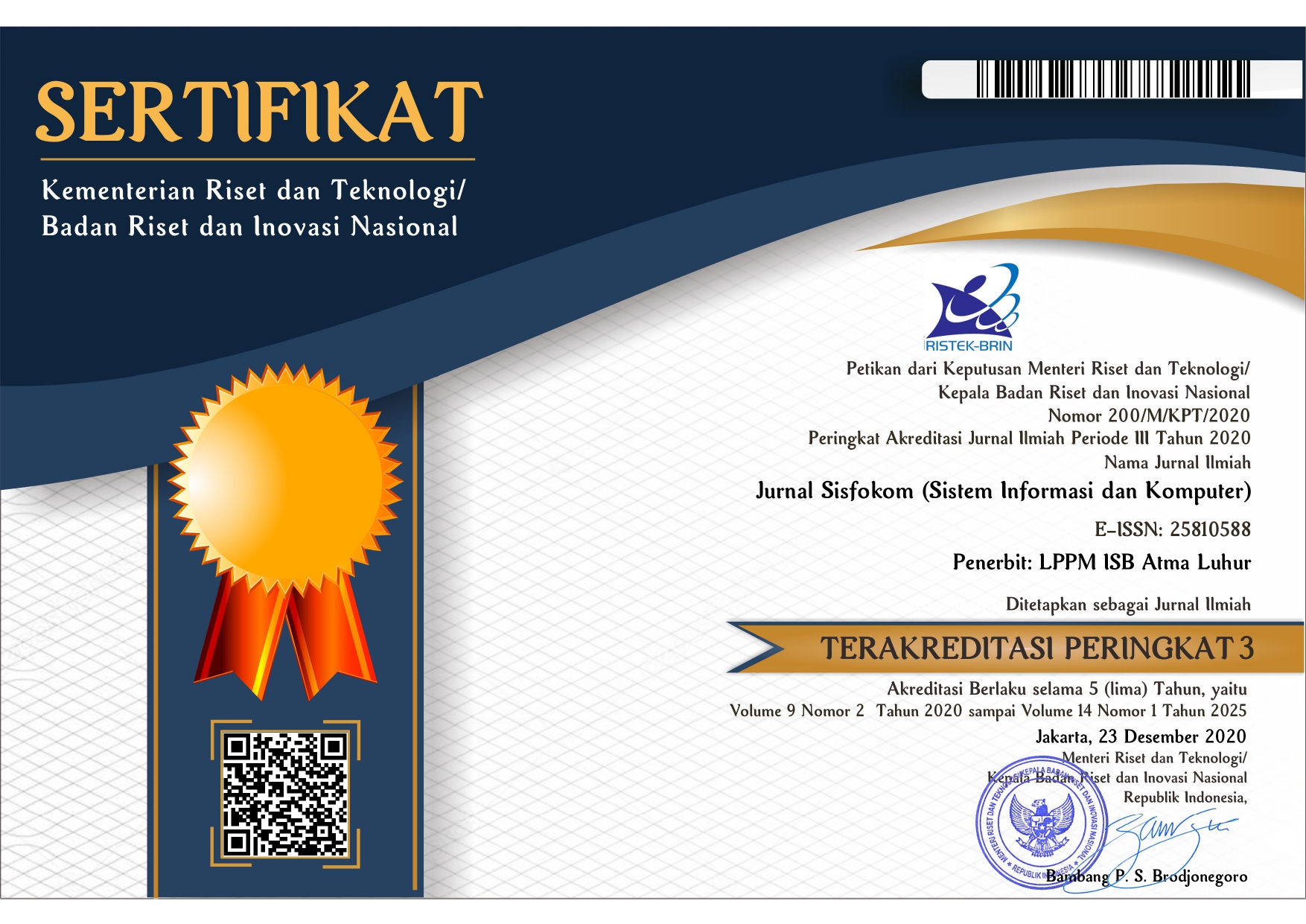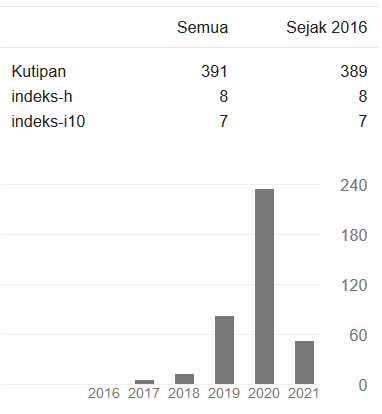ISO Technology Analysis with Extended TAM : A Case Study in PT Ebako Nusantara
DOI:
https://doi.org/10.32736/sisfokom.v14i1.2371Keywords:
ETAM, Internal Service Order, PLS-SEM, Manufacturing, Technology AcceptanceAbstract
Implementing information systems in manufacturing aims to improve operational efficiency and service quality. This study evaluates the acceptance of Internal Service Order (ISO) applications with the Extended Technology Acceptance Model (ETAM), that adds variables such as information quality, system quality and user habits. PLS-SEM analysis of 31 respondents found that user habits significantly influenced perceived ease of use (77.8%), which in turn influenced perceived usefulness (86.4%) and user attitude (62%). However, information quality did not significantly influence user habits, suggesting a need to improve information detail. These findings will help develop a TAM model for Indonesian furniture companies. The study recommends the improvement of information accuracy, the development of real-time notification features, and user training to increase adoption and operational efficiency This study provides guidance for organizations to optimize the application of technology in manufacturing operations.References
U. Chotijah and F. Retrialisca, “Analysis of Information Technology Readiness in Furniture Business in Indonesia,” Indones. J. Inf. Syst., vol. 3, no. 1, pp. 14–22, 2020, doi: 10.24002/ijis.v3i1.3470.
T. Suryawijaya and M. Safitri, “Angkut.in: The Future of Trucking by Digital Product Design Journey,” Ajie, vol. 08, no. 01, pp. 30–39, 2024, doi: 10.20885/ajie.vol8.iss1.art5.
N. Ullah, W. Mugahed Al-rahmi, and A. Alkhalifah, “Predictors for distributed ledger technology adoption: integrating three traditional adoption theories for manufacturing and service operations,” Prod. Manuf. Res., vol. 9, no. 1, pp. 178–205, 2021, doi: 10.1080/21693277.2021.1976963.
A. Syafira, W. Puspitasari, and W. Witjaksono, “Analysis and Evaluation of User Acceptance on the Use of Enterprise Resource Planning (ERP) Systems at PT Trisco Tailored Apparel Manufacturing,” IJAIT (International J. Appl. Inf. Technol., vol. 04, no. 01, p. 17, 2021, doi: 10.25124/ijait.v4i01.2852.
A. Saifunnasrullah and K. Budiman, “Digital Transformation Analysis in the Manufacturing Module in Aluminium Companies using the TAM Method,” J. Adv. Inf. Syst. Technol., vol. 5, no. 1, pp. 49–63, May 2023, doi: 10.15294/jaist.v5i1.66567.
J. Simangunsong, N. Hutagaol, and F. A. Pasaribu, “Implementasi Aplikasi Internal Service Order (ISO) Berbasis Web pada Perusahaan Manufaktur Furniture,” J. Inform. J. Pengemb. IT, vol. 9, no. 2, pp. 151–163, 2024, doi: 10.30591/jpit.v9i2.6813.
E. Skorupi?ska, M. Hitka, and M. Sydor, “Surveying Quality Management Methodologies in Wooden Furniture Production,” Systems, vol. 12, no. 2, pp. 1–17, 2024, doi: 10.3390/systems12020051.
N. Okyay, S. Kes, F. I??k, and A. T. Uzun, “Development of Smart Software Program for Production and Order Tracking in the Textile Industry,” Eur. J. Res. Dev., vol. 4, no. 2, pp. 168–173, 2024, doi: 10.56038/ejrnd.v4i2.449.
G. Ahn and S. Hur, “Multiobjective Real-Time Scheduling of Tasks in Cloud Manufacturing with Genetic Algorithm,” Math. Probl. Eng., vol. 2021, 2021, doi: 10.1155/2021/1305849.
T. P. Mabotja and Winiswa Mavutha, “Effect of Lean Six Sigma on order fulfilment process: evidence from manufacturing companies in Gauteng, South Africa,” Int. J. Res. Bus. Soc. Sci. (2147- 4478), vol. 13, no. 3, pp. 54–65, 2024, doi: 10.20525/ijrbs.v13i3.2952.
M. Hsu, “An Analysis of Intention to Use in Innovative Product Development Model through TAM Model,” EURASIA J. Math. Sci. Technol. Educ., vol. 12, no. 3, pp. 487–501, Jun. 2016, doi: 10.12973/eurasia.2016.1229a.
Christine and N. Legowo, “Evaluation of Policy Processing System Using Extended UTAUT Method at General Insurance Company,” Proc. 2018 Int. Conf. Inf. Manag. Technol. ICIMTech 2018, no. September, pp. 172–177, 2018, doi: 10.1109/ICIMTech.2018.8528113.
J. Chin and S. C. Lin, “A behavioral model of managerial perspectives regarding technology acceptance in building energy management systems,” Sustain., vol. 8, no. 7, 2016, doi: 10.3390/su8070641.
M. Ramkumar, T. Schoenherr, S. M. Wagner, and M. Jenamani, “International Journal of Production Economics Q-TAM?: A quality technology acceptance model for predicting organizational buyers ’ continuance intentions for e-procurement services,” Intern. J. Prod. Econ., vol. 216, no. March 2018, pp. 333–348, 2019, doi: 10.1016/j.ijpe.2019.06.003.
M. Turner, B. Kitchenham, P. Brereton, S. Charters, and D. Budgen, “Does the technology acceptance model predict actual use? A systematic literature review,” Inf. Softw. Technol., vol. 52, no. 5, pp. 463–479, 2010, doi: 10.1016/j.infsof.2009.11.005.
S. Hu, “A Conceptual Development of Digital Trade Adoption among Manufacturing Companies in China: A Technology Acceptance Model Approach,” J. Digit. Realis. Mastery, vol. 3, no. 02, pp. 76–80, 2024, doi: 10.56982/dream.v3i02.213.
D. Cao, H. Tao, Y. Wang, A. Tarhini, and S. Xia, “Acceptance of automation manufacturing technology in China: an examination of perceived norm and organizational efficacy,” Prod. Plan. Control, vol. 31, no. 8, pp. 660–672, 2020, doi: 10.1080/09537287.2019.1669091.
S. Laumer, C. Maier, and T. Weitzel, “Information quality, user satisfaction, and the manifestation of workarounds: A qualitative and quantitative study of enterprise content management system users,” Eur. J. Inf. Syst., vol. 26, no. 4, pp. 333–360, 2017, doi: 10.1057/s41303-016-0029-7.
W. Kurniawan and D. N. Utama, “Culture-Based TAM for Analyzing the Implementation of Building Management System,” J. Syst. Manag. Sci., vol. 13, no. 6, pp. 368–383, 2023, doi: 10.33168/JSMS.2023.0622.
S. A. Kamal, M. Shafiq, and P. Kakria, “Investigating acceptance of telemedicine services through an extended technology acceptance model (TAM),” Technol. Soc., vol. 60, no. March 2019, 2020, doi: 10.1016/j.techsoc.2019.101212.
L. Reza, S. Sunardi, and H. Herman, “Penilaian Sistem Informasi Akademik Dengan Metode Technology Acceptance Model,” Fountain Informatics J., vol. 7, no. 1, p. 31, 2021, doi: 10.21111/fij.v7i1.6393.
L. Yusrini, N. Eviana, Maeenuddin, R. Dorbala, and R. Darmadi, “Understanding the Acceptance of Digital Marketing Among Tour Operators: An Empirical Study,” African J. Hosp. Tour. Leis., vol. 13, no. 1, pp. 183–191, 2024, doi: 10.46222/ajhtl.19770720.496.
Y. S. Yen and F. S. Wu, “Predicting the adoption of mobile financial services: The impacts of perceived mobility and personal habit,” Comput. Human Behav., vol. 65, pp. 31–42, 2016, doi: 10.1016/j.chb.2016.08.017.
S. Petter, W. Delone, and E. R. McLean, “Information systems success: The quest for the independent variables,” J. Manag. Inf. Syst., vol. 29, no. 4, pp. 7–62, 2013, doi: 10.2753/MIS0742-1222290401.
W. H. DeLone and E. R. McLean, “The DeLone and McLean model of information systems success: A ten-year update,” J. Manag. Inf. Syst., vol. 19, no. 4, pp. 9–30, 2003, doi: 10.1080/07421222.2003.11045748.
N. Aeni Hidayah, N. Hasanati, R. Novela Putri, K. Fiqry Musa, Z. Nihayah, and A. Muin, “Analysis Using the Technology Acceptance Model (TAM) and DeLone McLean Information System (DM IS) Success Model of AIS Mobile User Acceptance,” 2020 8th Int. Conf. Cyber IT Serv. Manag. CITSM 2020, 2020, doi: 10.1109/CITSM50537.2020.9268859.
M. Ashfaq, J. Yun, S. Yu, and S. M. C. Loureiro, “I, Chatbot: Modeling the determinants of users’ satisfaction and continuance intention of AI-powered service agents,” Telemat. Informatics, vol. 54, no. April, p. 101473, 2020, doi: 10.1016/j.tele.2020.101473.
E. Edeh, W.-J. Lo, and J. Khojasteh, Review of Partial Least Squares Structural Equation Modeling (PLS-SEM) Using R: A Workbook, vol. 30, no. 1. 2023. doi: 10.1080/10705511.2022.2108813.
K. Kumar, “Partial Least Square (PLS) Analysis,” Resonance, vol. 26, no. 3, pp. 429–442, 2021, doi: 10.1007/s12045-021-1140-1.
F. Rafique, Hamaad., Shamim, Azra., Anwar, “Investigating Acceprance of Mobile Library Application with Extended Rechnology Acceptance Model (TAM),” Elzeiver Ltd, pp. 1–21, 2019.
J. E. Yavorsky and J. Dill, “Unemployment and men’s entrance into female-dominated jobs,” Soc. Sci. Res., vol. 85, p. 102373, 2020, doi: 10.1016/j.ssresearch.2019.102373.
S. P. Mohanty, A Bhijit;Mishra, “An Investigation on the Application of the Technology Acceptance Model (TAM) to Evaluate the Adoption of ERP Solutions in MSMEs of Odisha,” Int. J. Sci. Res., vol. 7, no. 11, pp. 94–101, 2018, doi: 10.21275/ART20192478.
S. Chatterjee, N. P. Rana, Y. K. Dwivedi, and A. M. Baabdullah, “Understanding AI adoption in manufacturing and production firms using an integrated TAM-TOE model,” Technol. Forecast. Soc. Change, vol. 170, no. November 2020, p. 120880, 2021, doi: 10.1016/j.techfore.2021.120880.
Downloads
Published
Issue
Section
License

This work is licensed under a Creative Commons Attribution 4.0 International License.
The copyright of the article that accepted for publication shall be assigned to Jurnal Sisfokom (Sistem Informasi dan Komputer) and LPPM ISB Atma Luhur as the publisher of the journal. Copyright includes the right to reproduce and deliver the article in all form and media, including reprints, photographs, microfilms, and any other similar reproductions, as well as translations.
Jurnal Sisfokom (Sistem Informasi dan Komputer), LPPM ISB Atma Luhur, and the Editors make every effort to ensure that no wrong or misleading data, opinions or statements be published in the journal. In any way, the contents of the articles and advertisements published in Jurnal Sisfokom (Sistem Informasi dan Komputer) are the sole and exclusive responsibility of their respective authors.
Jurnal Sisfokom (Sistem Informasi dan Komputer) has full publishing rights to the published articles. Authors are allowed to distribute articles that have been published by sharing the link or DOI of the article. Authors are allowed to use their articles for legal purposes deemed necessary without the written permission of the journal with the initial publication notification from the Jurnal Sisfokom (Sistem Informasi dan Komputer).
The Copyright Transfer Form can be downloaded [Copyright Transfer Form Jurnal Sisfokom (Sistem Informasi dan Komputer).
This agreement is to be signed by at least one of the authors who have obtained the assent of the co-author(s). After submission of this agreement signed by the corresponding author, changes of authorship or in the order of the authors listed will not be accepted. The copyright form should be signed originally, and send it to the Editorial in the form of scanned document to sisfokom@atmaluhur.ac.id.







